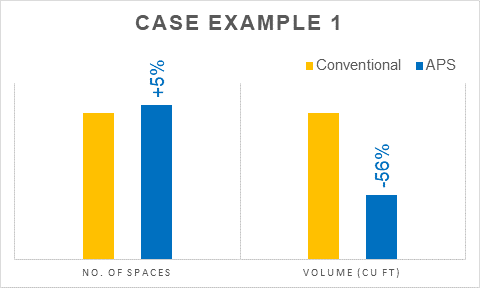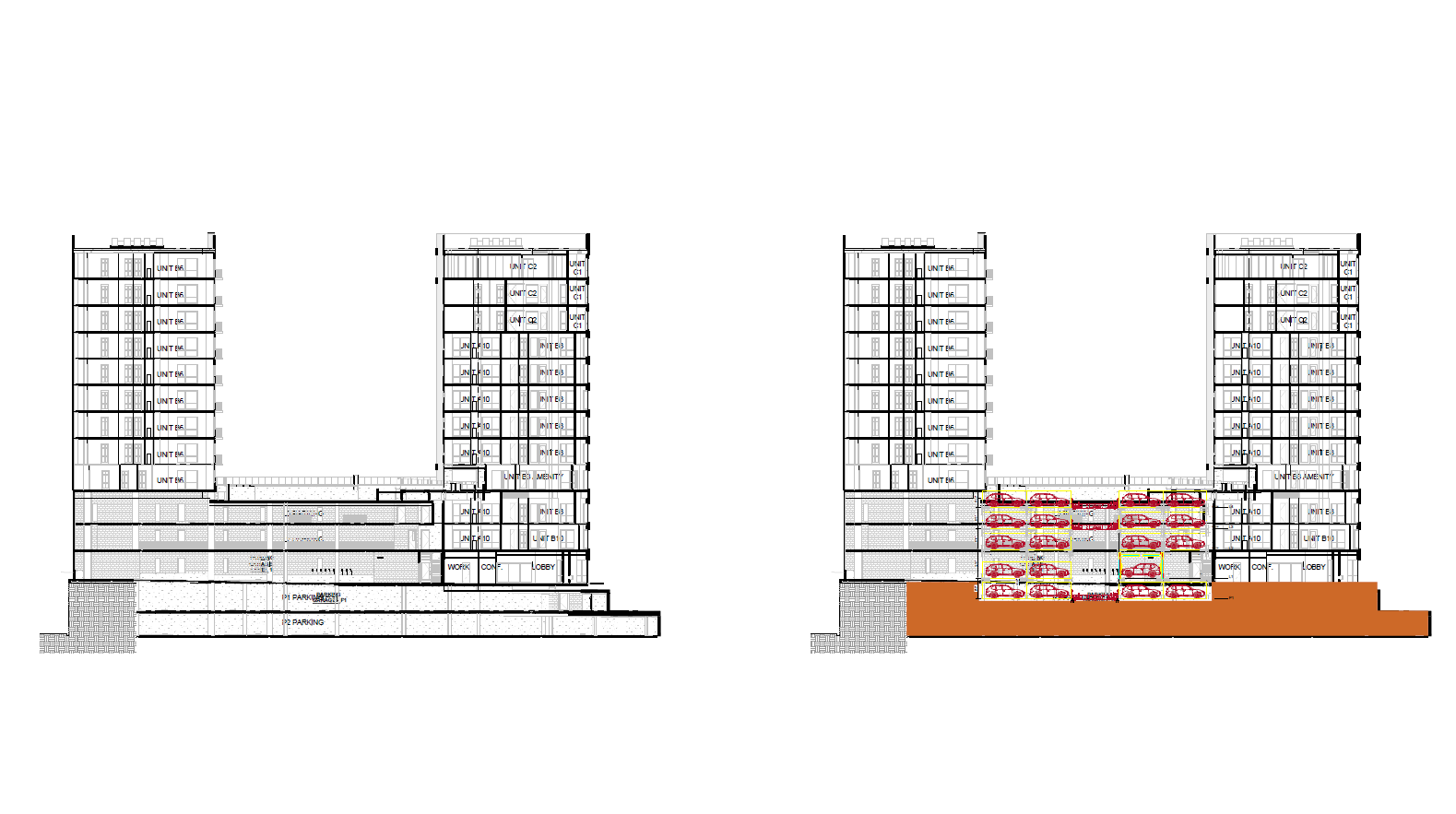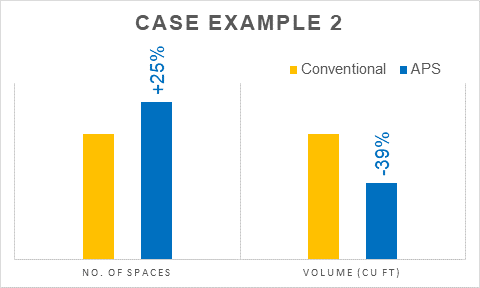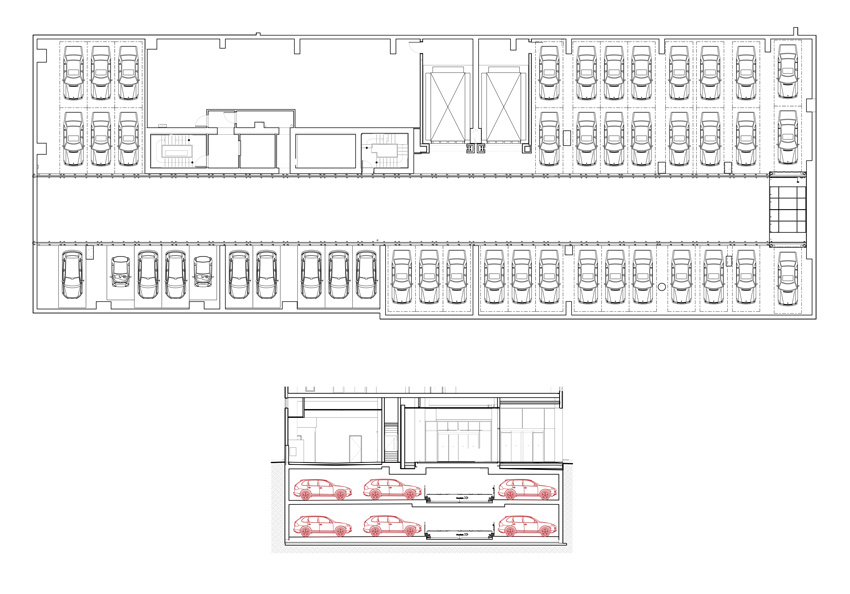The Evolution of Parking
Environmental and Other Benefits of Automated Parking Systems

Photo courtesy of Westfalia Logistics Solutions Europe
The on-grade space above a below-grade parking garage can be used for other purposes, such as this park over an underground automated parking system in Copenhagen.
Environmental Benefits
Noise and air pollution are on the rise due to congestion. Automated parking systems help mitigate these problems. Since vehicles are not turned on within an automated garage, both air and noise pollution are significantly reduced when compared to a conventional parking garage.
Automated parking systems can decrease emissions 20 to 30 percent compared to a conventional parking garage. These automated parking systems reduce carbon dioxide, nitrogen dioxide, carbon monoxide, volatile organic compounds, and fuel use, making them a sustainable, environmentally friendly car parking option.3
With less space needed for the garage structure itself, there is increased potential for green areas. This is especially important in densely populated urban areas.
Space Savings
Conventional parking garages are constructed to allow cars enough room to safely move in both directions and back out of parking spaces and people to walk to and from their vehicles. To accommodate for safety and easy passage conventional garages require walkways, stairwells, ramps, and often passenger elevators. These features that make it easy for the public to enter and exit the building take up valuable space.
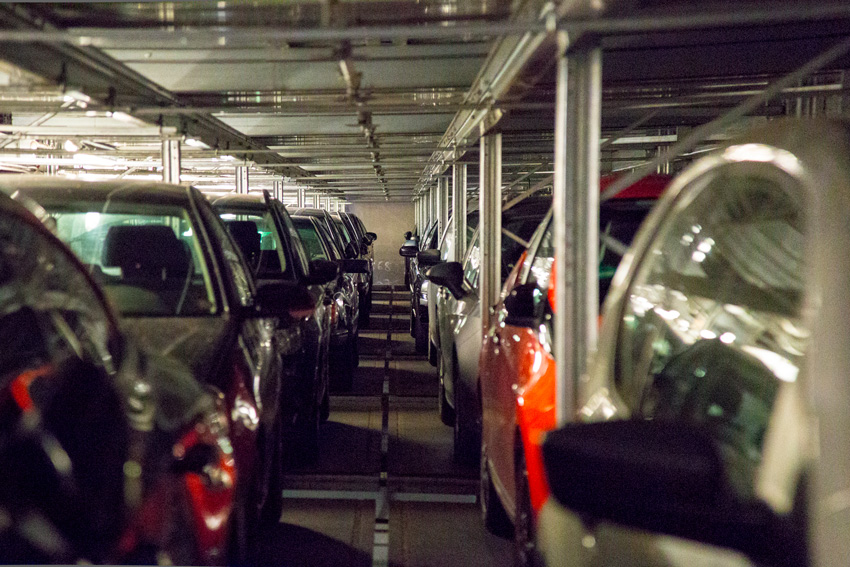
Photo courtesy of Westfalia Logistics Solutions Europe
With urban congestion and high land prices, the space-saving benefits of automated parking becomes more desirable to designers, owners, and operators.
By contrast, an automated garage only has to accommodate the equipment necessary to store vehicles. This means that the overall footprint of the building can be smaller to accommodate the same number of vehicles, or capacity, of a traditional garage. This is especially beneficial for projects with a limited construction area. In fact, according to studies, automated parking garages generally require 50 percent less building volume than traditional garages. Thus, companies can use the extra real estate for more profitable spaces like retail stores or additional apartments, increasing the project’s ROI.
Additional space savings are possible by using a palletless automated parking system. Since palletless garages do not require pallets or storage racks, developers can capitalize on those height savings per storage level. More available space can be leveraged to either increase vehicle storage capacity, or introduce other revenue generating opportunities like retail space.
